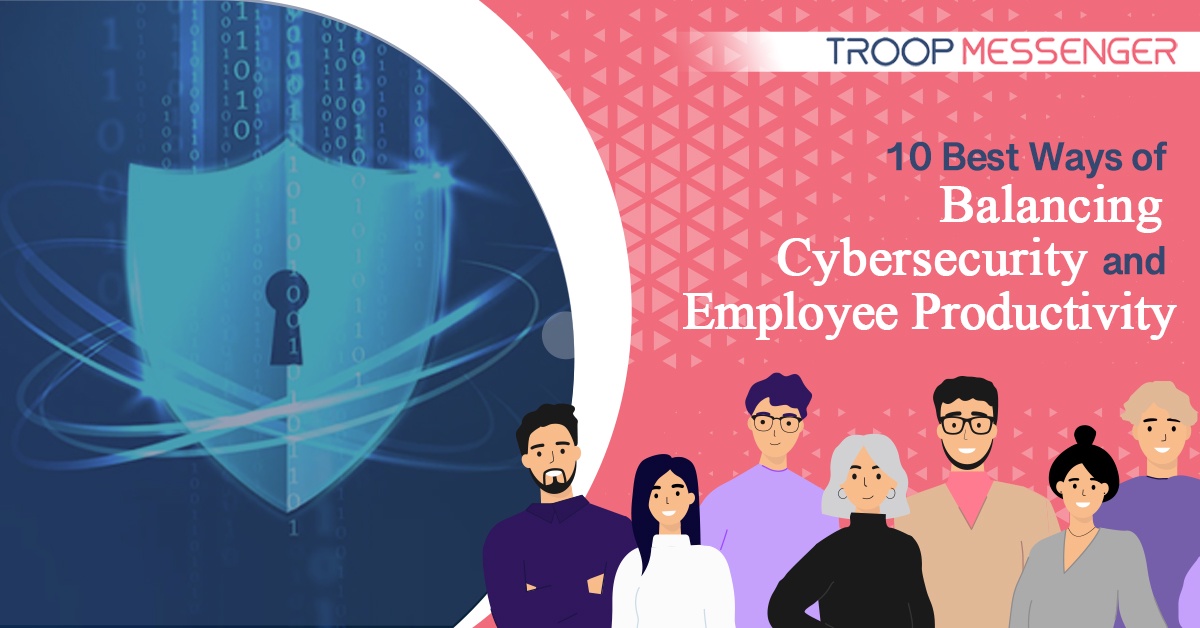Introduction
In today's digital landscape, businesses face the constant challenge of balancing employee productivity and cybersecurity. While organizations strive for maximum productivity, they must also ensure the protection of sensitive data and systems from cyber threats. Fortunately, there are several best practices that can help strike a balance between productivity and cybersecurity. In this blog post, we will explore ten essential practices that organizations can implement to effectively manage these competing priorities.
Foster a Culture of Cybersecurity Awareness
Start by cultivating a culture of cybersecurity awareness throughout the organization. Educate employees about the potential risks, such as phishing attacks, social engineering, and malware. Conduct regular training sessions to reinforce best practices and keep employees informed about the latest cyber threats. Encourage a proactive approach to cybersecurity by making it everyone's responsibility.
Implement Strong Password Policies
Weak passwords are one of the leading causes of security breaches. Implement strict password policies that require employees to use strong, unique passwords and change them regularly. Consider implementing multi-factor authentication (MFA) to provide an additional layer of security and protect against unauthorized access.
Use Secure Remote Access Technologies
With the rise of remote work, secure remote access has become crucial. Implement virtual private networks (VPNs) and other secure remote access technologies to ensure that employees can connect to company resources securely. Regularly update and patch remote access systems to protect against vulnerabilities.
Regularly Update and Patch Software
Keeping software up to date is vital for maintaining a secure environment. Regularly update and patch all software applications, including operating systems, web browsers, and productivity tools. Enable automatic updates whenever possible to minimize the risk of unpatched vulnerabilities being exploited.
Conduct Regular Security Audits
Regular security audits help identify vulnerabilities and assess the effectiveness of existing security measures. Conduct thorough audits of your organization's systems, networks, and processes. Engage external cybersecurity experts to conduct penetration tests and vulnerability assessments. Address any weaknesses identified promptly to minimize the risk of cyber threats.
Provide Robust Employee Training
Invest in comprehensive cybersecurity training programs for employees at all levels. Cover topics such as identifying phishing attempts, avoiding suspicious websites, and securing personal devices. Promote responsible use of technology and encourage employees to report any security incidents or concerns promptly.
Implement Robust Endpoint Protection
Endpoint devices, such as laptops, smartphones, and tablets, are often the entry point for cyber threats. Implement robust endpoint protection solutions that include antivirus software, firewall protection, and intrusion detection systems. Regularly update and monitor these solutions to ensure optimal security.
Enable Data Encryption
Data encryption adds an extra layer of protection to sensitive information, both at rest and in transit. Implement encryption mechanisms for all critical data, including emails, file transfers, and stored data. Utilize strong encryption algorithms and enforce encryption policies throughout the organization.
Implement a Robust Incident Response Plan
Despite all preventive measures, incidents may still occur. Establish a robust incident response plan that outlines the steps to be taken in the event of a cyber incident. Clearly define roles and responsibilities, establish communication channels, and conduct regular drills to test the effectiveness of the plan. Prompt response and containment can help minimize the impact of a security breach.
Regularly Back Up Data
Regular data backups are essential to ensure business continuity and quick recovery in the event of a security incident or system failure. Implement a robust backup strategy that includes both on-site and off-site backups. Regularly test the backup and restoration processes to verify their effectiveness.
Conclusion
Managing employee productivity while prioritizing cybersecurity is an ongoing challenge for organizations. By implementing these ten best practices, businesses can strike a balance between productivity and security. Remember to foster a culture of cybersecurity awareness, implement strong password policies, use secure remote access technologies, regularly update software, conduct security audits, provide robust employee training, implement endpoint protection, enable data encryption, establish an incident response plan, and regularly back up data. By following these practices, organizations can protect sensitive information, minimize the risk of cyber threats, and create a productive and secure work environment.
Remember, cybersecurity is an ongoing process that requires constant vigilance and adaptation to emerging threats. Stay informed about the latest trends in cybersecurity and adjust your practices accordingly. With a proactive approach and a commitment to best practices, businesses can successfully navigate the delicate balance between employee productivity and cybersecurity.


No comments yet